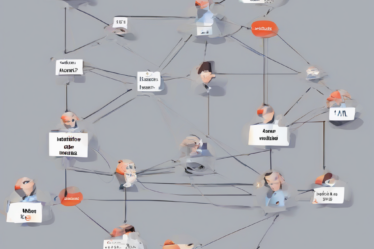
Unlocking Healthcare Careers: A Comprehensive Guide to the Medical Assistant Degree
The medical field is a dynamic and rewarding sector, offering a diverse range of career paths. For individuals seeking a fulfilling career with a relatively short educational commitment, the medical assistant (MA) degree presents a compelling option. This comprehensive guide delves into the intricacies of pursuing a medical assistant degree, encompassing curriculum details, career prospects, salary expectations, and the necessary steps to embark on this rewarding journey.
Understanding the Role of a Medical Assistant
Medical assistants play a crucial role in the healthcare system, acting as the vital link between physicians and patients. Their responsibilities are multifaceted and encompass both administrative and clinical duties. This blend of tasks requires a unique set of skills, making the role both challenging and engaging.
Administrative Duties:
- Scheduling appointments and managing patient records
- Handling insurance claims and billing procedures
- Answering phones and greeting patients
- Maintaining medical equipment and supplies
- Preparing and organizing patient charts and medical records
- Assisting with correspondence and other office tasks
Clinical Duties:
- Taking patient vital signs (temperature, pulse, blood pressure, respiration)
- Assisting physicians with examinations and procedures
- Preparing patients for examinations
- Administering medications (under the supervision of a physician)
- Drawing blood and collecting specimens for laboratory testing
- Sterilizing instruments and maintaining a clean and sanitary environment
- Educating patients on health maintenance and disease prevention
- Performing electrocardiograms (ECGs)
Educational Pathways to Becoming a Medical Assistant
There are several avenues to obtaining the necessary qualifications to become a medical assistant. The most common route is through completing a formal medical assistant program, which can be offered through various institutions.
Associate Degree in Medical Assisting
An Associate Degree in Medical Assisting (or a similar degree) provides a comprehensive education covering both the administrative and clinical aspects of the profession. These programs typically take two years to complete and offer a structured curriculum designed to equip students with the necessary skills and knowledge.
Certificate Programs in Medical Assisting
Certificate programs offer a shorter, more focused path to becoming a medical assistant. These programs typically take less than two years to complete and concentrate on the essential skills needed for entry-level positions. While offering a faster route, they may cover fewer topics in depth compared to associate degree programs.
Diploma Programs in Medical Assisting
Diploma programs are another option, typically lasting less than two years. Similar to certificate programs, they provide a focused curriculum on core medical assisting competencies. The specific content and duration can vary significantly among institutions.
Curriculum Overview of a Medical Assistant Program
The curriculum for a medical assistant program is designed to provide a well-rounded education encompassing both theoretical knowledge and practical skills. Typical course components include:
- Medical Terminology: Learning the language of medicine is crucial for effective communication and understanding medical records.
- Anatomy and Physiology: Understanding the structure and function of the human body is essential for performing clinical duties.
- Medical Law and Ethics: This coursework emphasizes legal and ethical considerations within the healthcare setting, including patient confidentiality and professional conduct.
- Pharmacology: This course covers the knowledge of medications, their administration, and potential side effects.
- Clinical Procedures: This is a hands-on component where students learn and practice vital signs measurement, phlebotomy, electrocardiography, and other clinical skills.
- Electronic Health Records (EHR): Proficiency in EHR systems is crucial for managing patient information efficiently and effectively.
- Medical Billing and Coding: Understanding medical billing and coding procedures is essential for processing insurance claims and ensuring proper financial management within a medical practice.
- Office Management: This aspect covers scheduling, patient communication, and other administrative tasks.
- Communication Skills: Effective communication is vital for interacting with patients, physicians, and other healthcare professionals.
Career Prospects and Job Outlook for Medical Assistants
The demand for medical assistants is consistently high and expected to continue growing. The aging population and the increasing need for healthcare services contribute significantly to this demand. Medical assistants find employment in a wide range of settings, including:
- Physicians’ offices
- Hospitals
- Clinics
- Urgent care facilities
- Nursing homes
- Health insurance companies
The job outlook is favorable, with opportunities for career advancement and specialization. Experienced medical assistants may move into supervisory roles, specialized clinical areas, or pursue further education to become medical coders, billers, or even registered nurses.
Salary Expectations for Medical Assistants
Salary levels for medical assistants vary based on factors such as experience, location, employer, and education level. Entry-level positions typically offer a competitive starting salary, and experienced professionals can command significantly higher compensation. While precise figures fluctuate regionally, online resources and salary surveys can provide valuable insights into typical salary ranges in specific geographic areas.
Certification and Licensure
While licensure requirements for medical assistants vary by state, many employers prefer or require certification. Certification demonstrates competency and professionalism, enhancing career prospects. Several reputable organizations offer medical assistant certification, including the American Association of Medical Assistants (AAMA) and the National Healthcareer Association (NHA).
Steps to Becoming a Medical Assistant
The journey to becoming a successful medical assistant involves several key steps:
- Research Programs: Investigate accredited medical assistant programs in your area, considering program length, curriculum, and cost.
- Application and Admission: Complete the application process for your chosen program, fulfilling any prerequisite requirements.
- Complete Your Education: Dedicate yourself to completing your chosen program, actively participating in classes and clinical experiences.
- Obtain Certification: Prepare for and pass the certification exam offered by your chosen certifying body.
- Resume and Cover Letter: Craft a professional resume and cover letter highlighting your skills and qualifications.
- Job Search: Begin your job search using online job boards, networking, and direct applications to healthcare facilities.
- Interview Preparation: Practice answering common interview questions and be prepared to demonstrate your knowledge and skills.
- Accepting a Position: Once you’ve secured a position, begin your career as a medical assistant, continuing your professional development.
Continuing Education and Professional Development
The healthcare field is constantly evolving, requiring medical assistants to stay current with the latest advancements and technologies. Continuing education opportunities, such as workshops, seminars, and online courses, are essential for maintaining professional competency and enhancing career prospects.
Conclusion (Omitted as per instructions)


